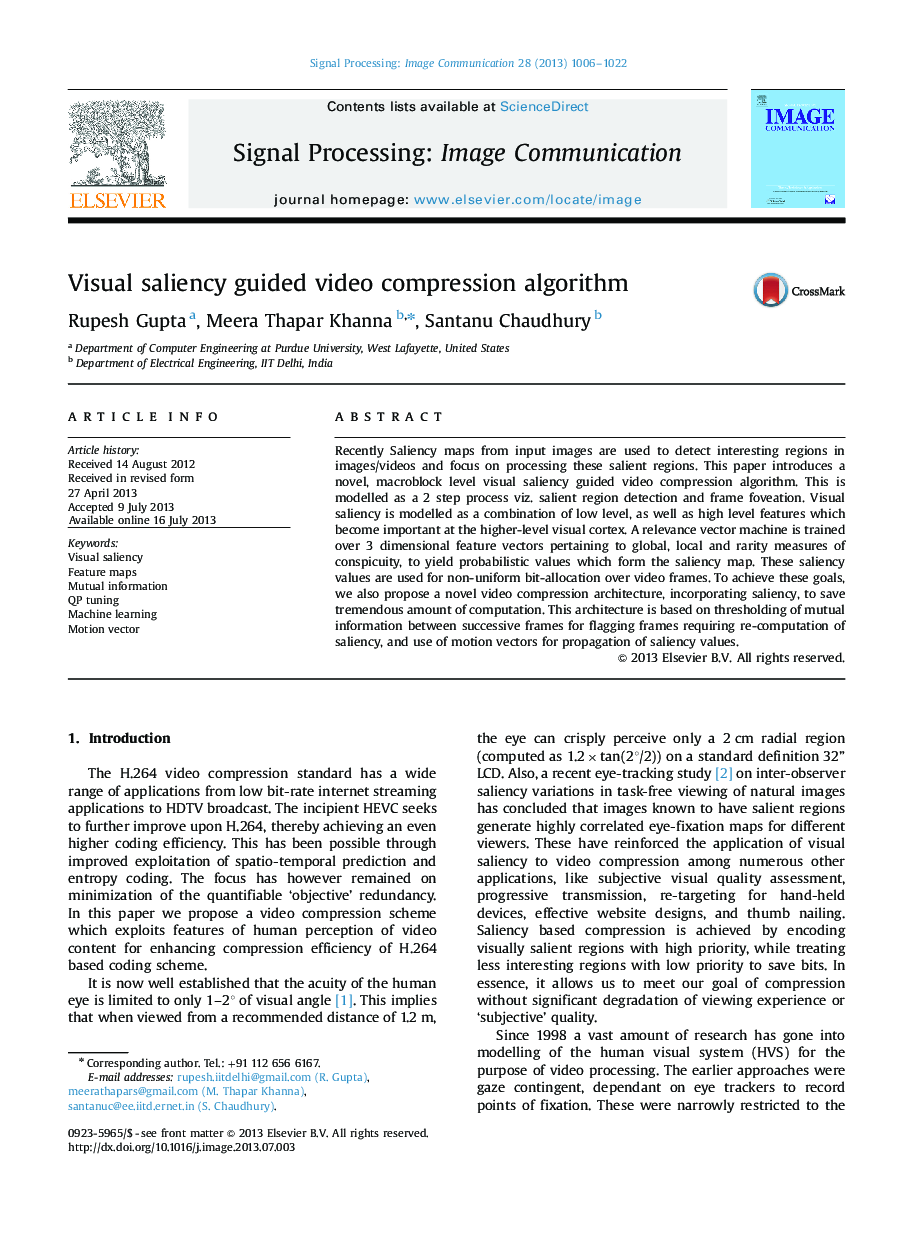| Article ID | Journal | Published Year | Pages | File Type |
|---|---|---|---|---|
| 536917 | Signal Processing: Image Communication | 2013 | 17 Pages |
•A two-stage novel video compression architecture is proposed for video compression.•Machine learning scheme over three dimensional features is used for saliency computation.•Saliency computation at macroblock level saves computation.•Thresholding of mutual information between successive frames indicates the frames requiring re-computation of saliency.•The motion vectors propagate the saliency values for macroblocks in P frames.
Recently Saliency maps from input images are used to detect interesting regions in images/videos and focus on processing these salient regions. This paper introduces a novel, macroblock level visual saliency guided video compression algorithm. This is modelled as a 2 step process viz. salient region detection and frame foveation. Visual saliency is modelled as a combination of low level, as well as high level features which become important at the higher-level visual cortex. A relevance vector machine is trained over 3 dimensional feature vectors pertaining to global, local and rarity measures of conspicuity, to yield probabilistic values which form the saliency map. These saliency values are used for non-uniform bit-allocation over video frames. To achieve these goals, we also propose a novel video compression architecture, incorporating saliency, to save tremendous amount of computation. This architecture is based on thresholding of mutual information between successive frames for flagging frames requiring re-computation of saliency, and use of motion vectors for propagation of saliency values.
